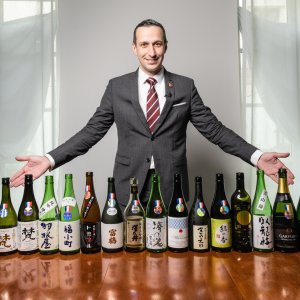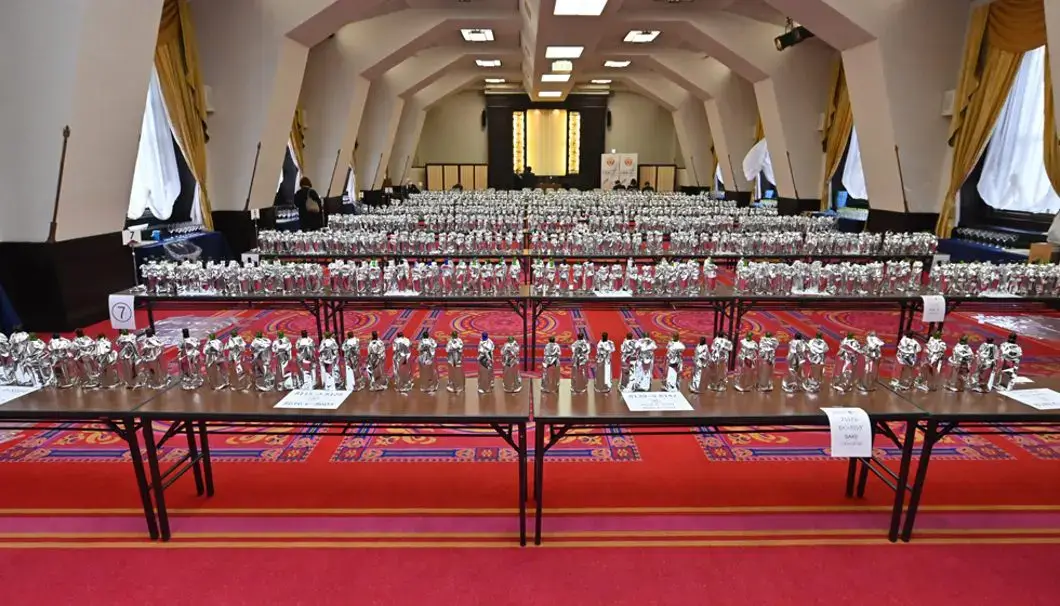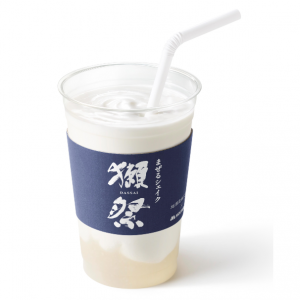
The Fine Sake Awards 2022 results announced
On March 22, the results were announced for The Fine Sake Awards 2022, a sake event that uses wine glasses for drinking and evaluation.
This is the 12th such contest, seeing 1,064 brands from 292 breweries participating, and the top 30% in each category netted Gold Awards. Among those, the top 5% received Grand Prize Awards.
Sake that sells for less than 1,300 yen (US$11) per 720 ml (24 oz) bottle comprised the Main Division, where 18 brands grabbed the Grand Prize. These, included Atago No Matsu Tokubetsu Junmai by Niizawa Sake Brewery in Miyagi Prefecture and Yusa Junmai Ginjo by Fukushima Prefecture’s Okunomatsu Sake Brewery.
More expensive sake occupied the Premium Daiginjo Division, in which 16 brands like Dewazakura Yukimegami 35% from Yamagata Prefecture won Grand Prizes. Other expensive brands competed in the Premium Junmai Division, where Junmai Ginjo Zao from Miyagi Prefecture and 15 other brands got top honors.
Meanwhile, sparkling sake was also divided into two classes: Those selling above 1,960 yen ($16) per 720 mL (24 oz) bottle, and those selling below that price. In the Premium Sparkling Sake Category only Kuromatsu Hakushika Sparkling Junmai Daiginjo by Tatsuuma-Honke Brewing took a Grand Prize, but in the lower-priced Sparkling Sake Category three took home wins, including Shippo Mifuku Sparkling from Mifuku Shuzo in Shiga Prefecture.
A panel of 40 judges selected the winners. Judges included sommeliers, restaurateurs, retailers, and other experts, and judgement was based on blind tastings from a Riedel wine glass designed for sake.
LINK: SAKETIMES|2022/3/22 【速報】「ワイングラスでおいしい日本酒アワード 2022」 の審査結果が発表されました!
Nishibori Sake Brewery experimenting with light to change sake flavors
This April, Nishibori Sake Brewery in Oyama City, Tochigi Prefecture, expects to complete their first batch of sake brewed under constant exposure to green LED light.
This is the first brewery in the world to make use of light to influence the flavors of sake, breaking with conventional thought that light adversely affects the fermentation process during sake brewing. Nishibori found that yeast reacts positively to red wavelengths of light when converting sugar to alcohol, resulting in a dryer sake. Conversely, a sweeter tasting sake could also be brewed by slowing the yeast down with exposure to blue LED light.
Rather than the standard enamel tanks that block out light, in 2019, Nishibori patented the process of brewing in a 1,500 L (396-gallon) transparent tank with four LED lights shining on the contents within for about 20 days. These light experiments resulted in the Illumina series of sake, beginning with red and blue light variants made from Asahi no Yume rice produced in Tochigi. The new green-lit variety of Illumina will also use the same rice and it’s hoped that a more umami-rich flavor will come of it.
In addition to making interesting changes to the flavors of their sake, Nishibori says that this new process can also save on labor, because the clear tank allows fermentation to be observed more easily.
Illumina Green Light can already be pre-ordered from online retailers to be shipped in early April in 720 ml (24 oz) bottles for 2,400 yen (US$20). Some remaining bottles of Red Light are also still available for about the same price.
LINK: 日本農業新聞 | 2022/3/25 日本酒の常識破り“脚光” 栃木県の蔵元 透明タンクにLED照射、味わい自在
Nihonsakari develops sake that can be stored in warmer temperatures
Nihonsakari, a sake producer in Nishinomiya City, Hyogo Prefecture, has patented a brewing technique that allows its brews to be stored for long periods of time in warmer temperatures up to 40°C (104°F) or higher.
Generally, sake is considered best kept in cooler conditions, because an effect called the Maillard reaction occurs at higher temperatures, which alters the taste of sake and causes it to turn a brown color. The Maillard reaction contributes flavor and is responsible for the pleasing colors of breads, grilled meats and the like, and is typically considered a good thing in the culinary world. Even aged sake takes advantage of this reaction to produce more complex flavors.
However, a majority of sake producers favor a clear look and taste and take measures to avoid the Maillard reaction through refrigeration. Unfortunately, this limits the ways it can be enjoyed and makes it extremely difficult to export and store in hot countries, such as those near the Equator.
So, Nihonsakari has developed a way to instead reduce the presence of the amino acids that cause the Maillard reaction. The challenge in this is that amino acids are also responsible for the flavor of sake, so Nihonsakari had to very carefully balance the contents of their tanks and maintain a desired flavor profile with the help of carefully selected sugars. As a result, at a temperature of 60°C (140°F), their sake can remain clearer after four weeks than a regular brew would be after one.
In addition to enabling sales in markets in hotter climates all over the world, this also allows for efficient storage of hot sake cans on heated convenience store shelves.
LINK: SAKETIMES | 2022/3/24 日本盛が「高温でも劣化しにくい日本酒」の製造に関わる特許を取得—海外輸出にも活かせる新技術に期待!
*If you would like us to send you monthly updates and information, register here.




Comments